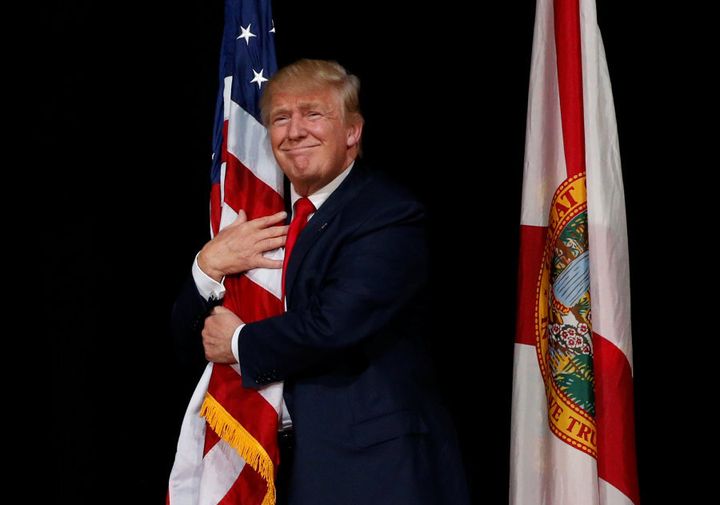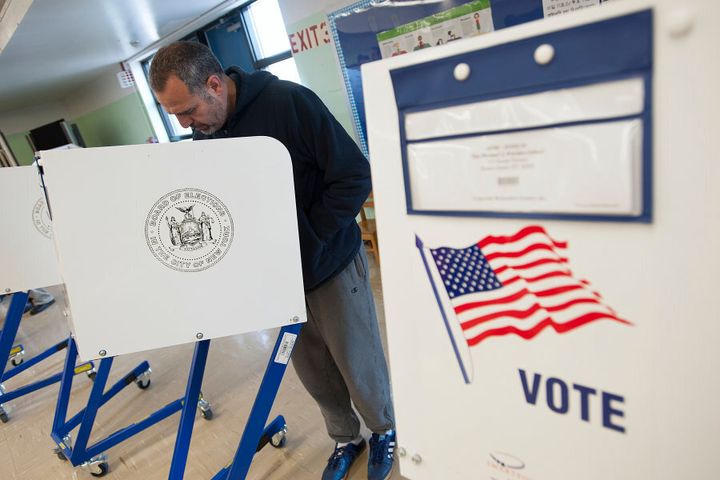
After a mammoth 18-month campaign, we're finally here. The U.S. election will be decided on Wednesday (Tuesday, American time), with either Hillary Clinton or Donald Trump declared the next President.
Half a world away from Washington D.C. and the White House, Australians will be watching on, and while it will be well into the night in America before they find out, it will be the middle of the day for us here Down Under.
So with that in mind, and America's convoluted electoral system to factor in, here's our election day cheat sheet guide for Australian viewers: what time the election will be declared, how the U.S. electoral system works, what the electoral college is, and what exactly we're in for on Wednesday.

What time will the winner of the U.S. election be declared?
We'll likely be getting the first "calls" of a winner around 3pm Wednesday (AEDT), after polls close on the west coast. While we may start getting the very first results on Tuesday afternoon (AEDT), after the tiny town of Dixville Notch in New Hampshire -- population of 12 -- votes at 12.01am Tuesday (local time) and counts their votes immediately after.
Polls across six time zones in the U.S. will gradually open across the way, from 10pm Tuesday (AEDT). By Wednesday 12pm (AEDT), we'll be getting the results from pivotal states like Florida, Pennsylvania, North Carolina and Ohio. By 3pm, polls close in western states including California. By then, we should have a pretty good idea if it will be a Clinton or Trump win.

How can I watch the U.S. election in Australia?
Basically, you won't be able to avoid it. Pretty much every TV channel will be reporting live on every development, from ABC 24 to Sky News to Nine and more. A shameless plug for ourselves -- keep an eye on The Huffington Post through the day for blanket coverage from our crack U.S. politics team.
How does the U.S. electoral college work?
America's electoral system is very different to our own. In Australia, we vote for a member to represent our local seat. The party that wins the most amount of seats becomes the government, and the leader of the government is named the Prime Minister. In America, citizens vote directly for who they want to be President, but it's not as clear-cut as a simple popular vote.

There are 538 'electoral votes' around America. Each state is assigned a certain number of these, based on population -- California has 55 electoral votes, Alaska has three, Texas has 38 and New Hampshire has four. Every state in the country (except Maine and Nebraska) allocates all of its electoral votes to the candidate who gets the most amount of votes in that state; so if Clinton gets the most votes in California, she gets 55 electoral votes. A candidate needs half of the total electoral votes, plus one, to win the presidency. Do the maths, and the magic number is 270.
It's convoluted, we know. Just keep 270 in your head through the day, and remember that a candidate can still win the electoral vote but lose the popular vote (which happened to George W Bush in 2000)
You can play around with this interactive map on 270towin.com, which lets you figure out which states each candidate needs to win to get that magic number. The website says, based on current polling, Clinton is already on 239 votes, with 138 votes a toss-up.

What do the polls say right now?
Almost all the polls are pointing toward a Clinton victory; the question just seems to be "by how much"? Pundits say Clinton has around 200 votes locked up already, with Trump at around 180. That gives her a 20-point buffer from the start, and 72 more votes from what is being called her "firewall", or states that she has worked hard to sew up -- Virginia, Colorado, Michigan, Wisconsin, Pennsylvania, and New Hampshire -- would lock in the win.
However, the Trump campaign says a handful of states included in Clinton's "locked up" 200 points are up for grabs. If Trump could prise off even one or two of those, the race is suddenly alive again.
Looking at individual polls, FiveThirtyEight says Clinton will win 300 electoral votes; the New York Times says the most likely outcome is Clinton wins 322 votes, and gives Clinton an 84 percent chance of winning; Predictwise calls an 89 percent chance of Clinton victory, and the most likely being 307 electoral votes; and The Huffington Post predicts 323 Clinton electoral votes and a 98.2 percent chance of victory.

Which are the key states to watch?
As above, a bunch of states are already almost certain to go to Clinton (most of the north-eastern states, the west coast) or Trump (most of the states in the middle of the country like Texas, Kansas, Mississippi, Tennessee and more). It then all comes down to the battleground states, the ones which can't be put in the column of either candidate just yet, and the ones that will decide the election after attracting most of the attention through the mammoth campaign.
States like Florida (29 electoral votes), Ohio (18 votes), North Carolina (15), Iowa (6), Nevada (6), Michigan (16), New Hampshire (4) and Virginia (13) have been cited as the key states in this election. Results in these states will make the difference between a Clinton blowout, a tight race or an unlikely Trump win. With Clinton believed to have 200 electoral votes in the bag, grabbing even a handful of these battleground states and a few other tight results going her way will see her win the presidency; but if Trump can put in strong performances in these states, Florida especially, then the race suddenly becomes far more interesting.

What happens after the election?
Well, we get a historic result either way; the first female president, or a billionaire reality TV star in the White House. Current President Barack Obama will remain at the helm until January 20, 2017, when the new president is inaugurated in Washington. Between election day and inauguration day, the president-elect will prepare to transition into the White House.